Auguste Rodin
 From Nwe
From Nwe
Auguste Rodin (born François-Auguste-René Rodin; November 12, 1840 – November 17, 1917) was a French sculptor, and one of the pre-eminent sculptors of the modern era. He played a pivotal role in redefining sculpture in the late nineteenth century, both excelling at and transcending the academic Beaux-Arts tradition. Possessing an ability to organize a complex, turbulent, deeply pocketed surface, he set himself apart from the predominant figure sculpture tradition of the time.
Despite Rodin's belief that contemporary sculpture was stale and limiting, he did not set out to rebel against tradition. He was schooled traditionally, and wanted academic recognition.[1] Yet Rodin's most notable sculptures were roundly criticized during his lifetime. A pose might be considered too informal, the exactness of his forms too real, or the lack of a heroic theme found disrespectful. Rodin was sensitive to the controversy, but did not change his style, and successive works brought increasing favor from the government and the artistic community. His work represents in artistic form the growth of democracy, in which the common people began to matter as much as the elites. His art reflected this trend away from the struggle of the great hero toward common humanity.
By the turn of the century, Rodin was a world-renowned artist. Wealthy private clients sought his work, and he kept company with a variety of high-profile intellectuals and artists.
Biography
Rodin was born in 1840 into a working-class family in Paris, the son of Marie Cheffer and Jean-Baptiste Rodin, a police department clerk. He was largely self-educated,[2] and began to draw at age ten. From 14 to 17, he attended the Petite École, a school specializing in art and mathematics, where he studied drawing with de Boisbaudran and painting with Belloc. Rodin submitted a clay model of a companion to the École des Beaux-Arts in 1857 in an attempt to win entrance; he did not succeed, and two further applications were also denied.[3] Given that entrance requirements at the Grand Ecole were not considered particularly demanding,[4] the rejections were considerable setbacks. Rodin's inability to gain entrance may have been due to the judges' Neoclassical tastes, while Rodin had been schooled in light, eighteenth century sculpture. Leaving the Petite École in 1857, Rodin would earn a living as a craftsman and ornamenter for most of the next two decades, producing decorative objects and architectural embellishments.
Rodin's sister Maria, two years his senior, died of peritonitis in a convent in 1862. Her brother was anguished, and felt guilty because he had introduced Maria to an unfaithful suitor. Turning away from art, Rodin briefly joined a Christian holy order. Father Peter Julian Eymard recognized Rodin's talent, however, and encouraged him to continue with his sculpture. He returned to work as a decorator, while taking classes with animal sculptor Antoine-Louis Barye. The teacher's attention to detail—for example, in rendering the musculature of animals in motion—significantly influenced Rodin.[5]
In 1864, Rodin began to live with a young seamstress named Rose Beuret, with whom he would stay—with ranging commitment—for the rest of his life. The couple bore a son, Auguste-Eugène Beuret, in 1866. The year that Rodin met Beuret, he offered his first sculpture for exhibition, and entered the studio of Albert-Ernest Carrier-Belleuse, a successful mass producer of objects d'art. Rodin worked as Carrier-Belleuse' chief assistant until 1870, designing roof decorations and staircase and doorway embellishments. With the outbreak of the Franco-Prussian War, Rodin was called to serve in the National Guard, but his service was brief due to his near-sightedness.[6] Decorators' work had dwindled because of the war, yet Rodin needed to support his family. Carrier-Belleuse soon asked Rodin to join him in Belgium, where they would work on ornamentation for Brussels' stock exchange.
Rodin spent the next six years abroad. Though his relationship with Carrier-Belleuse deteriorated, he found other employment in Brussels, and his companion Rose soon joined him there. Having saved enough money to travel, Rodin visited Italy for two months in 1875, where he was drawn to the work of Donatello and Michelangelo,[7] which had a profound effect on his artistic direction.[8] Returning to Belgium, he began work on The Age of Bronze, a life-size male figure whose realism would lead to accusations of sculptural cheating.
Artistic independence
Rose Beuret and Rodin returned to Paris in 1877, moving into a small flat on the Left Bank. Misfortune surrounded Rodin: his mother, who wanted to see her son marry, was dead, and his father was blind and senile, cared for by Rodin's sister-in-law, Aunt Thérèse. Rodin's eleven-year-old son Auguste, possibly mentally retarded or brain-damaged from a fall, was also in the ever-helpful Thérèse's care. Rodin had essentially abandoned his son for six years,[9] and would have a very limited relationship with him throughout their lives. Son and father now joined the couple in their flat, with Rose as caretaker. The charges of fakery surrounding The Age of Bronze continued. Rodin increasingly sought more soothing female companionship in Paris, and Rose stayed in the background.
Rodin earned his living collaborating with more established sculptors on public commissions, primarily memorials and neo-baroque architectural pieces in the style of Carpeaux.[10] In competitions for commissions, he submitted models of Denis Diderot, Jean-Jacques Rousseau, and Lazare Carnot, all to no avail. He worked on his own time on studies leading to the creation of his next important work, St. John the Baptist Preaching.
In 1880, Carrier-Belleuse—now art director of the Sèvres national porcelain factory—offered Rodin a part-time position as a designer. The offer was in part a gesture of reconciliation, which Rodin accepted. The part of Rodin that appreciated eighteenth-century tastes was aroused, and he immersed himself in designs for vases and table ornaments that gave the factory renown across Europe.[11] The artistic community appreciated his work in this vein, and Rodin was invited to society gatherings by such friends as writer Léon Cladel. French stateman Leon Gambetta expressed a desire to meet Rodin, and at this salon the sculptor impressed him. In turn, Gambetta spoke of Rodin to several government ministers, likely including Edmund Turquet, the Undersecretary of the Ministry of Fine Arts.[12]
Rodin's relationship with Turquet was rewarding: through him, he won the commission to create a portal for a planned museum of decorative arts. Rodin dedicated much of the next four decades to his elaborate Gates of Hell, an unfinished portal for a museum that was never built. Many of the portal's figures became sculptures in themselves, including his most famous work, The Thinker, as well as The Kiss. With the commission came a free, sizeable studio, granting Rodin a new level of artistic freedom. Soon, he stopped working at the porcelain factory; his income came from private commissions.
In 1883, Rodin agreed to supervise a sculpture course for Alfred Boucher during his absence, where he met the 18-year-old Camille Claudel. The two formed a passionate but stormy relationship, and influenced each other artistically. Claudel inspired Rodin as a model for many of his figures, and she was a talented sculptor, assisting him on commissions.
Although busy with The Gates of Hell, Rodin won other commissions. He pursued an opportunity to create a monument for the French town of Calais, to depict an important moment in the town's history. For a monument to French author Honoré de Balzac, Rodin was chosen in 1891. His execution of both sculptures clashed with traditional tastes, and met with varying degrees of disapproval from the organizations that sponsored the commissions. Still, Rodin was gaining support from diverse sources that continued his path toward fame.
In 1889, the Paris Salon invited Rodin to be a judge on its artistic jury. Though Rodin's career was on the rise, Claudel and Beuret were becoming increasingly impatient with Rodin's "double life." Claudel and Rodin shared an atelier at a small old castle, but Rodin refused to relinquish his ties to Beuret, his loyal companion during the lean years, and mother of his son. During one absence, Rodin wrote to her, "I think of how much you must have loved me to put up with my caprices… I remain, in all tenderness, your Rodin."[13]Claudel's mental health deteriorated.
Character
Known for his love affairs and his interest in the sensual, Rodin was a short, stocky, and bearded man, sometimes referred to as a "brute".[14] Very devoted to his craft, he worked constantly, but not feverishly. Though he has been stereotyped as temperamental and loquacious—especially in his later years—he has also been described as possessing a silent strength,[15] and during his first appearances at Parisian salons, he seemed shy.[16] Decades after the charges of surmoulage early in his career, he was still sensitive to the controversy. He ensured that the size or design of his figures made it obvious that his creations were entirely his.
Art
In 1864, Rodin submitted his first sculpture for exhibition, The Man with the Broken Nose, to the Paris Salon. The subject was an elderly neighbourhood street porter. The unconventional bronze piece was not a traditional bust, but instead the head was "broken off" at the neck, the nose was flattened and crooked, and the back of the head was absent, having fallen off the clay model in an accident. The work emphasized texture and the emotional state of the subject; it illustrated the "unfinishedness" that would characterize many of Rodin's later sculptures.[17] The Salon rejected the piece.
Early figures: the inspiration of Italy
In Brussels, Rodin created his first full-scale work, The Age of Bronze, having returned from Italy. Modelled by a Belgian soldier, the figure drew inspiration from Michelangelo's Dying Slave, which Rodin had observed at the Louvre. Attempting to combine Michelangelo's mastery of the human form with his own sense of human nature, Rodin studied his model from all angles, at rest and in motion; he mounted a ladder for additional perspective, and made clay models, which he studied by candlelight. The result was a life-size, well-proportioned nude figure, posed unconventionally with his right hand atop his head, and his left arm held out at his side, forearm parallel to the body.
In 1877, the work debuted in Brussels and then was shown at the Paris Salon. The statue's apparent lack of a theme was troubling to critics. It did not commemorate mythology nor a noble historical event, and it is not clear whether Rodin intended a theme.[18] He first titled the work The Vanquished, in which form the left hand held a spear, but he removed the spear because it obstructed the torso from certain angles. After two more intermediary titles, Rodin settled on The Age of Bronze, suggesting the Bronze Age, and in Rodin's words, "man arising from nature".[19] Later, however, Rodin said that he had in mind "just a simple piece of sculpture without reference to subject".[20]
Its mastery of form, light, and shadow made the work look so realistic that Rodin was accused of surmoulage, or having taken a cast from a living model.[7] Rodin vigorously denied the charges, writing to newspapers and having photographs taken of the model to prove how the sculpture differed. He demanded an inquiry and was eventually exonerated by a committee of sculptors. Leaving aside the false charges, the piece polarized critics. It had barely won acceptance for display at the Paris Salon, and criticism likened it to "a statue of a sleepwalker" and called it "an astonishingly accurate copy of a low type".[21] Others rallied to defend the piece and Rodin's integrity. The government minister Turquet admired the piece, and The Age of Bronze was purchased by the state for 2,200 francs, or what it had cost Rodin to have it cast in bronze.[22]
A second male nude, St. John the Baptist Preaching, was completed in 1878. Rodin sought to avoid another charge of surmoulage by making the statue larger than life: St. John stands almost 6'7''. While the The Age of Bronze is statically posed, St. John gestures and seems to move toward the viewer. The effect of walking is achieved despite the figure having both feet firmly on the ground–a physical impossibility, and a technical achievement that was lost on most contemporary critics.[23] Rodin chose this contradictory position to, in his words, "display simultaneously…views of an object which in fact can be seen only successively".[24] Despite the title, St. John the Baptist Preaching did not have an obviously religious theme. The model, an Italian peasant who presented himself at Rodin's studio, possessed an idiosyncratic sense of movement that Rodin felt compelled to capture. Rodin thought of John the Baptist, and carried that association into the title of the work.[25] In 1880, Rodin submitted the sculpture to the Paris Salon. Critics were still mostly dismissive of the work, but the piece finished third in the Salon's sculpture category.[26]
Despite the immediate receptions of St. John and The Age of Bronze, Rodin had achieved a new degree of fame. Students sought him at his studio, praising his work and scorning the charges of surmoulage. The artistic community knew his name.
Hell-spawn
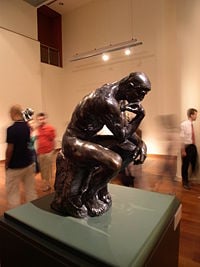
A commission to create a portal for Paris' planned Museum of Decorative Arts was awarded to Rodin in 1880.[10] Although the museum was never built, Rodin worked throughout his life on The Gates of Hell, a monumental sculptural group depicting scenes from Dante's Inferno in high relief. Often lacking a clear conception of his major works, Rodin compensated with hard work and a striving for perfection.[27] He conceived The Gates with the surmoulage controversy still in mind: "…I had made the St. John to refute [the charges of casting from a model], but it only partially succeeded. To prove completely that I could model from life as well as other sculptors, I determined…to make the sculpture on the door of figures smaller than life."[27]
Many of his best-known sculptures started as designs of figures for this monumental composition,[5] such as The Thinker (Le Penseur), The Three Shades (Les Trois Ombres), and The Kiss (Le Baiser), and only later presented as separate and independent works.
The Thinker'(Le Penseur, originally titled The Poet, after Dante) was to become one of the most well-known sculptures in the world.[28][29] The original was a 27.5 inch-high bronze piece created between 1879 and 1889, designed for the Gates' lintel, from which the figure would gaze down upon Hell. While The Thinker most obviously characterizes Dante, aspects of the Biblical Adam, the mythological Prometheus,[10] and Rodin himself have been ascribed to him.[28][30] Other observers stress the figure's rough physicality and emotional tension, and suggest that The Thinker's renowned pensiveness is not intellectual.[31]
Other well-known works derived from The Gates are the Ugolino group, Fugitive Love, The Falling Man, The Sirens, Fallen Caryatid Carrying her Stone, Damned Women, The Standing Fauness, The Kneeling Fauness, The Martyr, She Who Once Was the Beautiful Helmetmaker's Wife, Glaucus, and Polyphem.
The Burghers of Calais
The town of Calais had contemplated an historical monument for decades when Rodin learned of the project. He pursued the commission, interested in the medieval motif and patriotic theme. The mayor of Calais was tempted to hire Rodin on the spot after visiting his studio, and soon the memorial was approved, with Rodin as its architect. It would commemorate the six townspeople of Calais who offered their lives to save their fellow citizens. During the Hundred Years' War, the army of King Edward III besieged Calais, and Edward asked for six citizens to sacrifice themselves and deliver to him the keys to the city, or the entire town would be pillaged. The Burghers of Calais depicts the men as they are leaving for the king's camp, carrying keys to the town's gates and citadel.
Rodin began the project in 1884, inspired by the chronicles of the siege by Jean Froissart.[32] Though the town envisioned an allegorical, heroic piece centered on Eustache de Saint-Pierre, the eldest of the six men, Rodin conceived the sculpture as a study in the varied and complex emotions under which all six men were laboring. One year into the commission, the Calais committee was not impressed with Rodin's progress. Rodin indicated his willingness to end the project rather than change his design to meet the committee's conservative expectations, but Calais said to continue.
In 1889, The Burghers of Calais was first displayed to general acclaim. It is a bronze sculpture weighing two tons, and its figures are 2 meters tall.[32] The six men portrayed do not display a united, heroic front;[33] rather, each is isolated from his brothers, struggling in their own way with their expected fate. Rodin soon proposed that the monument's high pedestal be eliminated, wanting to move the sculpture to ground level so that viewers could "penetrate to the heart of the subject".[34] At ground level, the figures' positions lead the viewer around the work, and subtly suggest their common movement forward.[35] The committee was incensed by the non-traditional proposal, but Rodin would not yield. In 1895, Calais succeeded in having Burghers displayed its way: the work was placed in front of a public garden on a high platform, surrounded by a cast-iron railing. Rodin had wanted it located near the town hall, where it would engage the public. Only after damage during the First World War, subsequent storage, and Rodin's death was the sculpture displayed as he had intended. It is one of Rodin's most well-known and acclaimed works.[32]
Commissions and controversy
The Société des Gens des Lettres, a Parisian organization of writers, planned a monument to French novelist Honoré de Balzac immediately after his death in 1850. The society commissioned Rodin to create the memorial in 1891, and Rodin spent years developing the concept for his sculpture. Challenged in finding an appropriate representation of Balzac given his rotund physique, Rodin produced many studies: portraits, full-length figures in the nude, wearing a frock coat, or in a robe. (He had a replica tailored for his contemplation.) The realized version displayed Balzac cloaked in the ample drapery, looking forcefully into the distance, with deeply gouged features. Rodin's intent had been to show Balzac at the moment of conceiving a work[36]—to express courage, labor, and struggle.[37]
When Balzac was exhibited in 1898, the negative reaction was not surprising.[28] The Société rejected the work, and the press ran parodies. Criticizing the work, Morey (1918) reflected, "there may come a time, and doubtless will come a time, when it will not seem outre to represent a great novelist as a huge comic mask crowning a bathrobe, but even at the present day this statue impresses one as slang."[5] A contemporary critic, indeed, indicates that Balzac is considered one of Rodin's masterpieces.[38] The monument had its supporters in Rodin's day; a manifesto defending him was signed by Claude Monet, Claude Debussy, and future Premier Georges Clemenceau, among many others.[39]
Rather than try to convince skeptics of the merit of the monument, Rodin repaid the Société his commission and moved the figure to his garden. After this experience, Rodin did not complete another public commission. Only in 1939 was Monument to Balzac cast in bronze.
Commissioned to create a monument to French writer Victor Hugo in 1889, Rodin dealt extensively with the subject of artist and muse. Like many of Rodin's public commissions, Monument to Victor Hugo met with resistance because it did not fit conventional expectations. Commenting on Rodin's momument to Victor Hugo, The Times in 1909 expressed that "there is some show of reason in the complaint that [Rodin's] conceptions are sometimes unsuited to his medium, and that in such cases they overstrain his vast technical powers".[40] The 1897 plaster model was not cast in bronze until 1964.
Other works
The popularity of Rodin's most famous sculptures tends to obscure his total creative output. A prolific artist, he created thousands of busts, figures, and sculptural fragments over more than five decades. He painted in oils (especially in his thirties) and in watercolors. The Musée Rodin holds 7,000 of his drawings, in chalk, charcoal, and drypoint.[41][42]
Portraiture was an important component of Rodin's oeuvre, helping him to win acceptance and financial independence.[43] His first sculpture was a bust of his father in 1860, and he produced at least 56 portraits between 1877 and his death in 1917.[44] Early subjects included fellow sculptor Jules Dalou (1883) and companion Camille Claudel (1884). Later, with his reputation established, Rodin made busts of prominent contemporaries such as English politician George Wyndham (1905), Irish playwright George Bernard Shaw (1906), Austrian composer Gustav Mahler (1909), and French statesman Georges Clemenceau (1911).
Aesthetic
Rodin was a naturalist, less concerned with monumental expression than with character and emotion.[45] Departing with centuries of tradition, he turned away from the abstraction and idealism of the Greeks, and the decorative beauty of the Baroque and neo-Baroque movements. His sculpture emphasized the individual and the concreteness of flesh, and suggested emotion through detailed, textured surfaces, and the interplay of light and shadow. To a greater degree than his contemporaries, Rodin believed that an individual's character was revealed by his physical features.[46]
Rodin's talent for surface modeling allowed him to let every part of the body speak for the whole. The male's passion in The Kiss is suggested by the grip of his toes on the rock, the rigidness of his back, and the differentiation of his hands.[5] Speaking of The Thinker, Rodin illuminated his aesthetic: "What makes my Thinker think is that he thinks not only with his brain, with his knitted brow, his distended nostrils and compressed lips, but with every muscle of his arms, back, and legs, with his clenched fist and gripping toes."[47]
To Rodin, sculptural fragments were autonomous works, and he considered them to portray the essence of his artistic statement. His fragments—perhaps lacking arms, legs, or a head—took sculpture further from its traditional role of portraying likenesses, and into a realm where form existed for its own sake.[48] Notable examples are The Walking Man, Meditation without Arms, and Iris, Messenger of the Gods.
Rodin saw suffering and conflict as hallmarks of modern art. "Nothing, really, is more moving than the maddened beast, dying from unfulfilled desire and asking in vain for grace to quell its passion."[30] Charles Baudelaire echoed those themes, and was among Rodin's favorite poets. Rodin enjoyed music, especially the opera composer Gluck, and wrote a book about French cathedrals. He owned a work by the as-yet-unrecognized Van Gogh, and admired the forgotten El Greco.[14]
Method
Instead of copying traditional academic postures, Rodin preferred to work with amateur models, street performers, acrobats, strong men and dancers. In the atelier, his models moved about and took positions without manipulation.[5] The sculptor made quick sketches in clay that were later fine-tuned, cast in plaster, and forged into bronze or carved in marble. Rodin was fascinated by dance and spontaneous movement; his John the Baptist shows a walking preacher, displaying two phases of the same stride simultaneously. As France's best-known sculptor, he had a large staff of pupils, craftsmen, and stone cutters working for him, including the Czech sculptors Josef Maratka and Joseph Kratina. Through his method of marcottage (layering), he used the same sculptural elements time and time again, under different names and in different combinations. Disliking formal pedestals, Rodin placed his subjects around rough rock to emphasize their immediacy.
Later years
By 1900, Rodin's artistic reputation was entrenched. Private clients sought smaller sculptures from him, and his assistants at the atelier made duplicates of his works. Coinciding with the 1900 World's Fair (Exposition Universelie) in Paris, Rodin convinced some wealthy clients to finance a pavilion to display 165 pieces of his art. With this exposure, he received requests to make busts of prominent people internationally,[28] commanding 40,000 francs per head.[49] In his personal life, his mistresses ranged from the Welsh painter Gwen John in 1904 to the French-American Duchess de Choiseul in 1908.[50] As Rodin's fame grew, he attracted many followers, including the German poet Rainer Maria Rilke, and authors Octave Mirbeau, Joris-Karl Huysmans, and Oscar Wilde.[33] Rilke stayed with Rodin in 1905 and 1906, and did administrative work for him; he would later write a monograph on the sculptor.
After the turn of the century, Rodin was a regular visitor to Great Britain, where he developed a loyal following by the beginning of the First World War. He first visited England in 1881, where his friend, the artist Alphonse Legros, had introduced him to the poet William Ernest Henley. Given Henley's personal connections and enthusiasm for Rodin's art, he was most responsible for Rodin's reception in Britain.[51] Through Henley, Rodin met Robert Louis Stevenson and Robert Browning, in whom he found further support.[52] Encouraged by the enthusiasm of British artists, students, and high society for his art, Rodin donated a significant selection of his works to the nation in 1914.
In 1903, Rodin was elected president of the International Society of Painters, Sculptors, and Engravers. He replaced its former president, James Abbott McNeill Whistler, upon Whistler's death. His election to the prestigious position was largely due to the efforts of Albert Ludovici, father of English philosopher Anthony Ludovici.
During his later creative years, Rodin's work turned increasingly toward the female form, and themes of more overt masculinity and femininity.[28] He concentrated on small dance studies, and produced numerous erotic drawings, sketched in a loose way, without taking his pencil from the paper or his eyes from the model. Rodin met American dancer Isadora Duncan in 1900, attempted to seduce her,[53] and the next year sketched studies of her and her students. In July 1906, Rodin was also enchanted by dancers from the Royal Ballet of Cambodia, and produced some of his most famous drawings from the experience.[54]
Fifty-three years into their relationship, Rodin married Rose Beuret. The wedding was January 29, 1917, and Beuret died two weeks later, on February 16.[55] Rodin was ill that year; in January, he suffered weakness from influenza,[56] and on November 16 his physician announced that "[c]ongestion of the lungs has caused great weakness. The patient's condition is grave."[55] Rodin died the following day, age 77, at his villa in Meudon, Île-de-France, on the outskirts of Paris.[3] A cast of The Thinker was placed next to his tomb in Meudon. It was Rodin's wish that the figure serve as his headstone and epitaph.[57]
Legacy
Rodin willed to the state his studio and the right to make casts from his plasters. Because he encouraged the reproduction of his work, Rodin's sculptures are represented in many collections. The Musée Rodin in Paris, founded in 1919, holds the largest Rodin collection. The relative ease of making reproductions has also encouraged many forgeries: a survey of expert opinion placed Rodin in the top ten most-faked artists.[58] To deal with unauthorized reproductions, the Musée in 1956 set twelve casts as the maximum number that could be made from Rodin's plasters and still be considered his work. (As a result of this limit, The Burghers of Calais, for example, is found in 14 cities.)[32] Art critics concerned about authenticity have argued that taking a cast does not equal reproducing a Rodin sculpture–especially given the importance of surface treatment in Rodin's work.[59] In the market for sculpture, plagued by fakes, the ability to prove the authenticity of a piece by its provenance increases its value significantly. A Rodin work with a verified history sold for US$4.8 million in 1999.[60]
Even before his death, Rodin was compared to Michelangelo,[30] and was widely recognized as the greatest artist of the era.[61] In the three decades following his death, his popularity waned due to changing aesthetic values.[61] Since the 1950s, Rodin's reputation has re-ascended;[14] he is recognized as the most important sculptor of the modern era, and has been the subject of much scholarly work.[61][62]
Rodin was honored for his artistic accomplishments, but he did not spawn a significant, lasting school of followers. His notable students included Antoine Bourdelle, the American Malvina Hoffman, and his mistress Camille Claudel, whose sculpture received high praise in France. The French order Légion d'honneur made him a Commander, and he received an honorary doctorate from the University of Oxford.
Rodin restored an ancient role of sculpture–to capture the physical and intellectual force of the human subject.[62] His popularity is ascribed to his emotion-laden representations of ordinary men and women and to his ability to find the beauty and pathos in the human body. His most popular works, such as The Kiss and The Thinker, are widely used outside the fine arts as symbols of human emotion and character. [63]
Locations of works
- Musée Khalil, Giza, Egypt
- Alte Nationalgalerie, Berlin, Germany
- Art Institute of Chicago, Chicago, Illinois, United States
- University of Louisville, Louisville, Kentucky, United States
- Baltimore Museum of Art, Baltimore, Maryland, United States - The Thinker
- Boulevard Raspail, near Boulevard Montparnasse, in the 6th arrondissement of Paris - a statue of Honoré de Balzac
- Brooklyn Museum Cantor Gift, Brooklyn, New York, United States
- Calais Hotel de Ville - The Burghers of Calais
- California Palace of the Legion of Honor, San Francisco, California, United States
- Detroit Institute of Art, Detroit, Michigan, United States
- Hermitage, Saint Petersburg, Russia
- Pushkin Museum of Fine Arts, Moscow, Russia
- High Museum of Art, Atlanta, Georgia, United States
- Los Angeles County Museum of Art, Los Angeles, California, United States
- Maryhill Museum of Art, Maryhill, Washington, United States
- Metropolitan Museum of Art, New York City, United States
- Museo Nacional de Bellas Artes, Buenos Aires, Argentina
- Nasher Sculpture Center, Dallas, Texas - Eve
- National Gallery of Art, Washington, D.C., United States
- National Gallery of Australia, Canberra, Australia
- National Museum of Western Art, Tokyo, Japan
- Norton Simon Museum, Pasadena, California, United States - The Burghers of Calais
- Rodin Museum, Philadelphia, Pennsylvania, United States - Largest Rodin collection outside of Paris
- Stanford University, Sculpture Garden, Palo Alto, California, United States
- Trammell Crow Center, Dallas, Texas
- Vatican Museums, Rome, Italy
- Victoria Tower Gardens, Palace of Westminster, London, United Kingdom - The Burghers of Calais
- the World Room, Journalism Hall, Columbia University, United States - a bust of Joseph Pulitzer
Notes
- ↑ William Harlan Hale. World of Rodin, 1840-1917. (Little Brown & Company, 1970), 76.
- ↑ "(François) Auguste (René) Rodin." International Dictionary of Art and Artists (St. James Press, 1990. Reproduced in Biography Resource Center. Farmington Hills, Mich.: Thomson Gale. 2006).
- ↑ 3.0 3.1 Rodin, Famous Sculptor, Dead. The New York Times, November 18, 1917, E3
- ↑ Hale, 40.
- ↑ 5.0 5.1 5.2 5.3 5.4 C. R. Morey, "The Art of Auguste Rodin." The Bulletin of the College Art Association of America 1 (4) (1918): 145-154. doi 10.2307/3046338
- ↑ Hale, 46.
- ↑ 7.0 7.1 "Auguste Rodin." Encyclopedia of World Biography, 2nd ed. (17 Vols. Gale Research, 1998. Reproduced in Biography Resource Center. Farmington Hills, Mich.: Thomson Gale. 2006.)
- ↑ Hale, 49-50.
- ↑ Hale, 65.
- ↑ 10.0 10.1 10.2 H. W. Janson. History of Art, 3rd edition, (New York: Harry N. Abrams, 1986), 638.
- ↑ Hale, 70.
- ↑ Hale, 71.
- ↑ Hale, 75.
- ↑ 14.0 14.1 14.2 Alfred Werner, "The Return of Auguste Rodin." Criticism 2 (1) (1960): 48-54
- ↑ Camille Mauclair, "The Decorative Sculpture of Auguste Rodin" International Monthly 3 (Jan./June 1901): 166-181
- ↑ Hale, 71.
- ↑ Janson, 637.
- ↑ Hale, 50.
- ↑ Hale, 51.
- ↑ Hale, 51.
- ↑ Hale, 51.
- ↑ Hale, 51.
- ↑ Hale, 80.
- ↑ Hale, 68.
- ↑ Hale, 68.
- ↑ Hale, 68.
- ↑ 27.0 27.1 Elsen, 35.
- ↑ 28.0 28.1 28.2 28.3 28.4 Millicent Bell, "Auguste Rodin." Raritan 14 (Spring 2005): 1-31
- ↑ Morey (1918) said, "The Penseur, in my opinion, is not destined to live as the masterpiece of Rodin; it is too early."
- ↑ 30.0 30.1 30.2 Albert Alhadeff, "Rodin: A Self-Portrait in the Gates of Hell." The Art Bulletin 48 (3/4)(1966):393-395
- ↑ Taillandier, 42, 46, 48.
- ↑ 32.0 32.1 32.2 32.3 Richard Swedberg, "Auguste Rodin's The Burghers of Calais: The Career of a Sculpture and its Appeal to Civic Heroism." Theory, Culture, & Society 22 (2) (2005): 45-67. doi 10.1177/0263276405051665
- ↑ 33.0 33.1 Mark Stocker, "A simple sculptor or an apostle of perversion?" Apollo 164 (537) (November 2006): 94-97
- ↑ Hale, 117.
- ↑ Hale, 115
- ↑ Auguste Rodin. His Sculpture And Its Aims. The Times, (1917-11-19), 11
- ↑ Hale, 136.
- ↑ Naomi Schor, "Pensive Texts and Thinking Statues: Balzac with Rodin." Critical Inquiry 27 (2) (2001): 239-264
- ↑ Hale, 122.
- ↑ M. Rodin and French Sculpture. The Times, 1909-10-04, 12
- ↑ Hale, 12.
- ↑ Kirk Varnedoe, "Early Drawings by Auguste Rodin." The Burlington Magazine 116 (853) (April 1974):197-204
- ↑ Hale, 82.
- ↑ Marion J. Hare, "Rodin and His English Sitters." The Burlington Magazine 129 (1011) (1987): 372-381
- ↑ Art Exhibitions: Auguste Rodin. The Times, 1931-07-14, 12
- ↑ Hale, 76.
- ↑ NGA Sculpture Galleries: Auguste Rodin National Gallery of Art, Washington, D.C. accessdate 2006-12-12 Adobe Flash
- ↑ Hale, 69.
- ↑ Hale, 145.
- ↑ Muriel Julius, "Human Emotion Made Tangible - The Work of Auguste Rodin." Contemporary Review 250 (1452) (January 1987): 41
- ↑ Joy Newton, "Rodin Is a British Institution." The Burlington Magazine 136 (1101) (1994): 822-828
- ↑ Hale, 73.
- ↑ Hale, 10.
- ↑ Erica Kinetz, "Rodin Show Visits Home Of Artist's Muses." The New York Times, 2006-12-27, E1
- ↑ 55.0 55.1 Auguste Rodin Gravely Ill. The New York Times, November 17, 1917, 13
- ↑ Auguste Rodin Has Grip. The New York Times, January 30, 1917, 3
- ↑ Albert E. Elsen Rodin. (New York: The Museum of Modern Art, 1963), 52.
- ↑ Milton Esterow, "The 10 Most Faked Artists" ARTnews (June 2005) accessdate 2007-02-05 [1]
- ↑ Eric Gibson, "The real Rodin." New Criterion 4 (24) (2005): 37-40
- ↑ Frederick M. Winship, "Bogus bronzes flood market: an estimated 4,000 fake castings have put the market for 19th- and 20th-century bronze sculpture in jeopardy." Insight on the News 26 (1) 2002-09-16
- ↑ 61.0 61.1 61.2 John M. Hunisak, "Rodin Rediscovered." Art Journal 41 (4) (1981): 370-371
- ↑ 62.0 62.1 Albert Ten Eyck Gardner, "The Hand of Rodin." The Metropolitan Museum of Art Bulletin, New Series 15 (9) (1957): 200-204
- ↑ Lampert, Catherine. ["Rodin," (François-)Auguste(-René). Grove Art Online, Oxford University Press. Retrieved 2006-12-19.
References
ISBN links support NWE through referral fees
- Alhadeff, Albert, "Rodin: A Self-Portrait in the Gates of Hell." The Art Bulletin 48 (3/4) (1966): 393-395.
- Bell, Millicent, "Auguste Rodin." Raritan 14 (Spring 2005): 1-31.
- Elsen, Albert E. (1963). Rodin. New York: The Museum of Modern Art. LCCN 63-014847
- Esterow, Milton, "The 10 Most Faked Artists" ARTnews (June 2005)
- Gardner, Albert Ten Eyck, The Hand of Rodin. The Metropolitan Museum of Art Bulletin New Series 15 (9)(1957): 200-204.
- Gibson, Eric, "The real Rodin." New Criterion 4 (24) (2005): 37-40.
- Hale, William Harlan. World of Rodin, 1840-1917. Little Brown & Company, 1970. ISBN 978-0316510103
- Janson, H. W. History of Art, 3rd ed. New York: Harry N. Abrams, 1986. ISBN 0810910942
- Julius, Muriel, "Human Emotion Made Tangible - The Work of Auguste Rodin." Contemporary Review 250 (1452) (January 1987): 41.
- Kinetz, Erica, "Rodin Show Visits Home Of Artist's Muses." The New York Times, 2006-12-27, E1.
- Mauclair, Camille, "The Decorative Sculpture of Auguste Rodin." International Monthly 3 (Jan./June 1901): 166-181
- Schmoll gen. Eisenwerth, J. Adolf, [translated from German by John Omrod], Rodin and Camille Claudel. Prestel, 1999. ISBN 379132005X
- Schor, Naomi, "Pensive Texts and Thinking Statues: Balzac with Rodin." Critical Inquiry 27 (2) (2001): 239-264.
- Stocker, Mark, "A simple sculptor or an apostle of perversion?" Apollo 164 (537) (November 2006): 94-97.
- Swedberg, Richard, "Auguste Rodin's The Burghers of Calais: The Career of a Sculpture and its Appeal to Civic Heroism." Theory, Culture, & Society 22 (2) (2005): 45-67.
- Varnedoe, Kirk, "Early Drawings by Auguste Rodin." The Burlington Magazine 116 (853) (April 1974): 197-204.
- Werner, Alfred, "The Return of Auguste Rodin." Criticism 2 (1) (1960): 48-54.
- Winship, Frederick M., "Bogus bronzes flood market: an estimated 4,000 fake castings have put the market for 19th- and 20th-century bronze sculpture in jeopardy." Insight on the News 26 (1) 2002-09-16.
External links
All links retrieved November 30, 2021.
- Musée Rodin, Paris
- Rodin Museum, Philadelphia
- Rodin-Web.org: Academic site on Rodin
- Rodin: Virtual Gallery
- Quotes from Rodin. brainyquote.com
- Dan Barry and William K. Rashbaum, Born of Hell, Lost After Inferno; Rodin Work From Trade Center Survived, and Vanished The New York Times, May 20, 2002.
Credits
New World Encyclopedia writers and editors rewrote and completed the Wikipedia article in accordance with New World Encyclopedia standards. This article abides by terms of the Creative Commons CC-by-sa 3.0 License (CC-by-sa), which may be used and disseminated with proper attribution. Credit is due under the terms of this license that can reference both the New World Encyclopedia contributors and the selfless volunteer contributors of the Wikimedia Foundation. To cite this article click here for a list of acceptable citing formats.The history of earlier contributions by wikipedians is accessible to researchers here:
The history of this article since it was imported to New World Encyclopedia:
Note: Some restrictions may apply to use of individual images which are separately licensed.
↧ Download as ZWI file | Last modified: 02/04/2023 04:34:55 | 5 views
☰ Source: https://www.newworldencyclopedia.org/entry/Auguste_Rodin | License: CC BY-SA 3.0
 ZWI signed:
ZWI signed: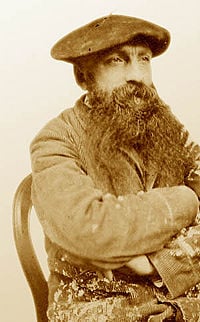

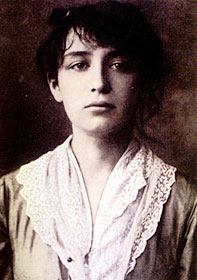
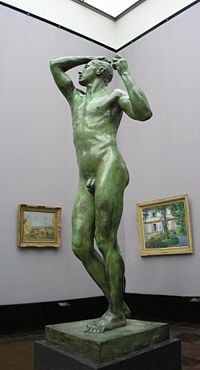
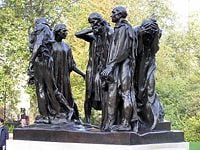
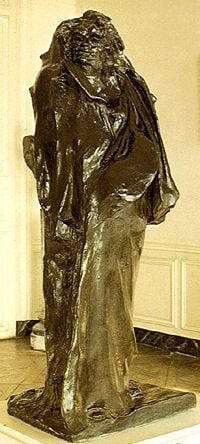
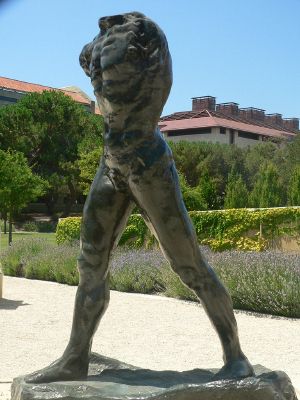
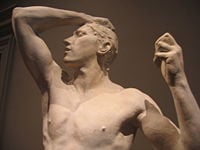

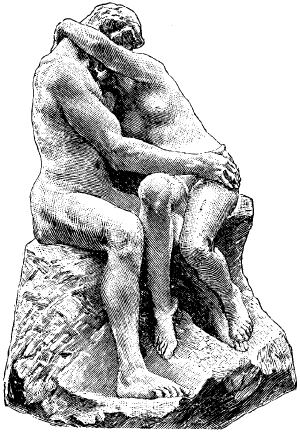
 KSF
KSF